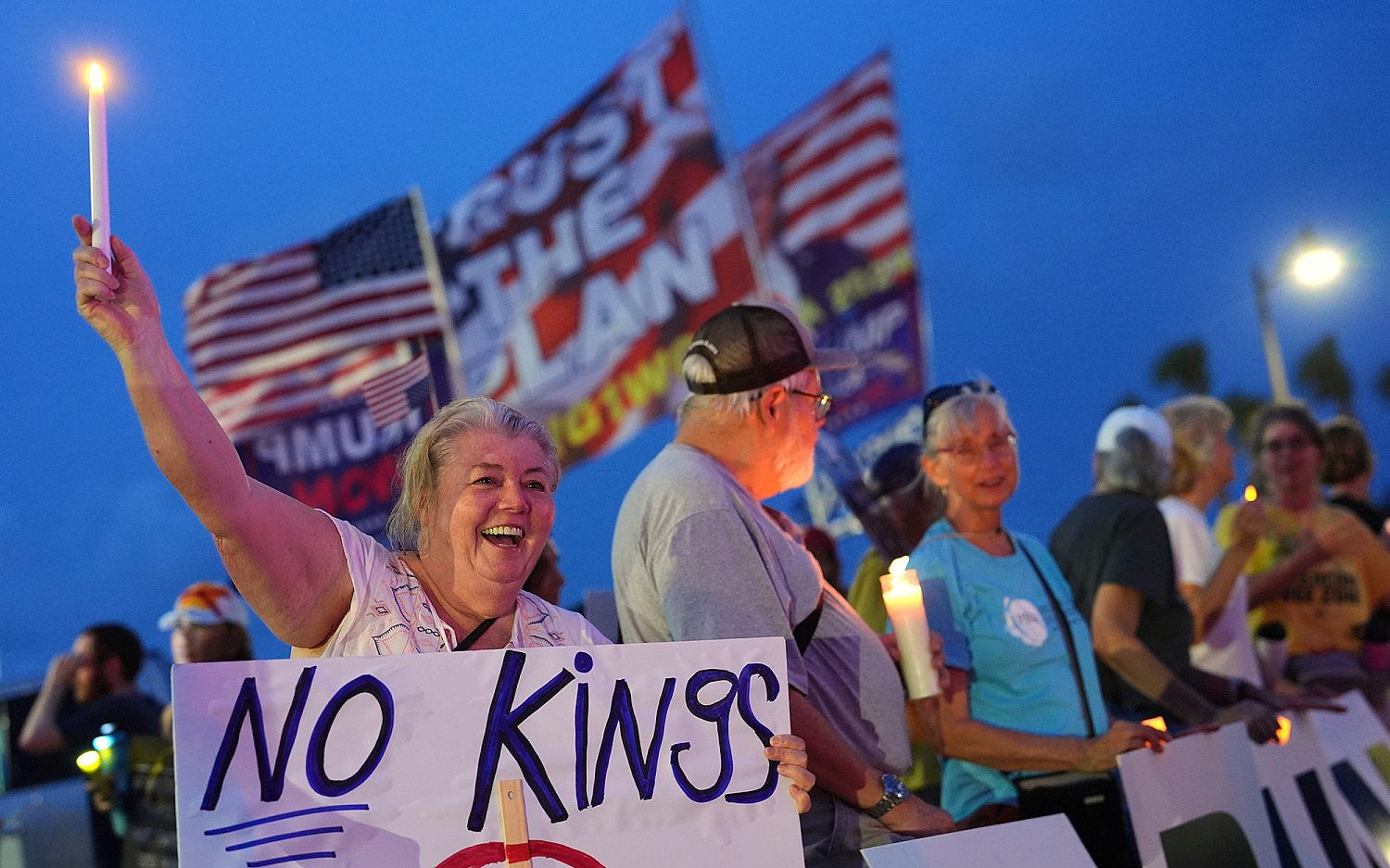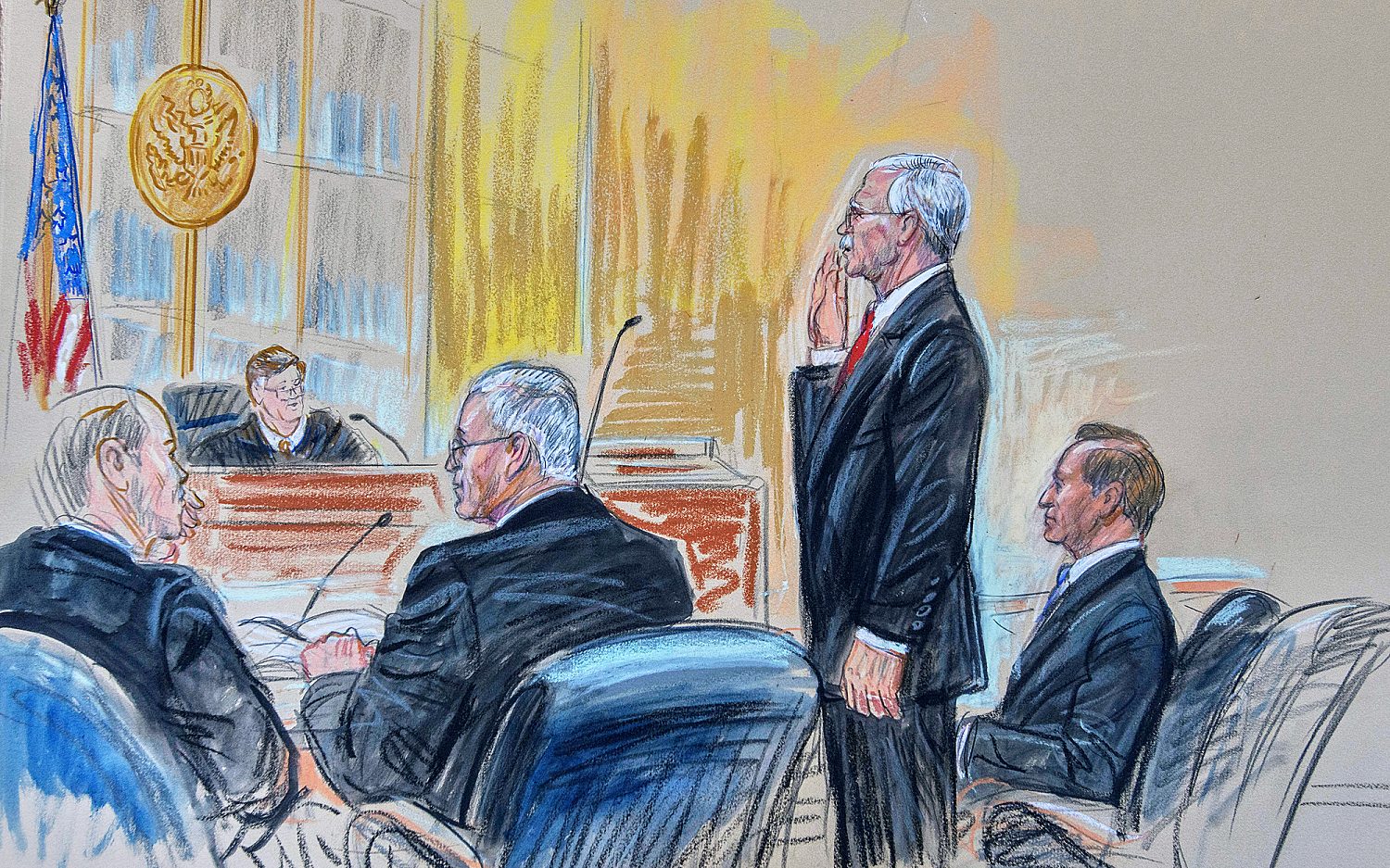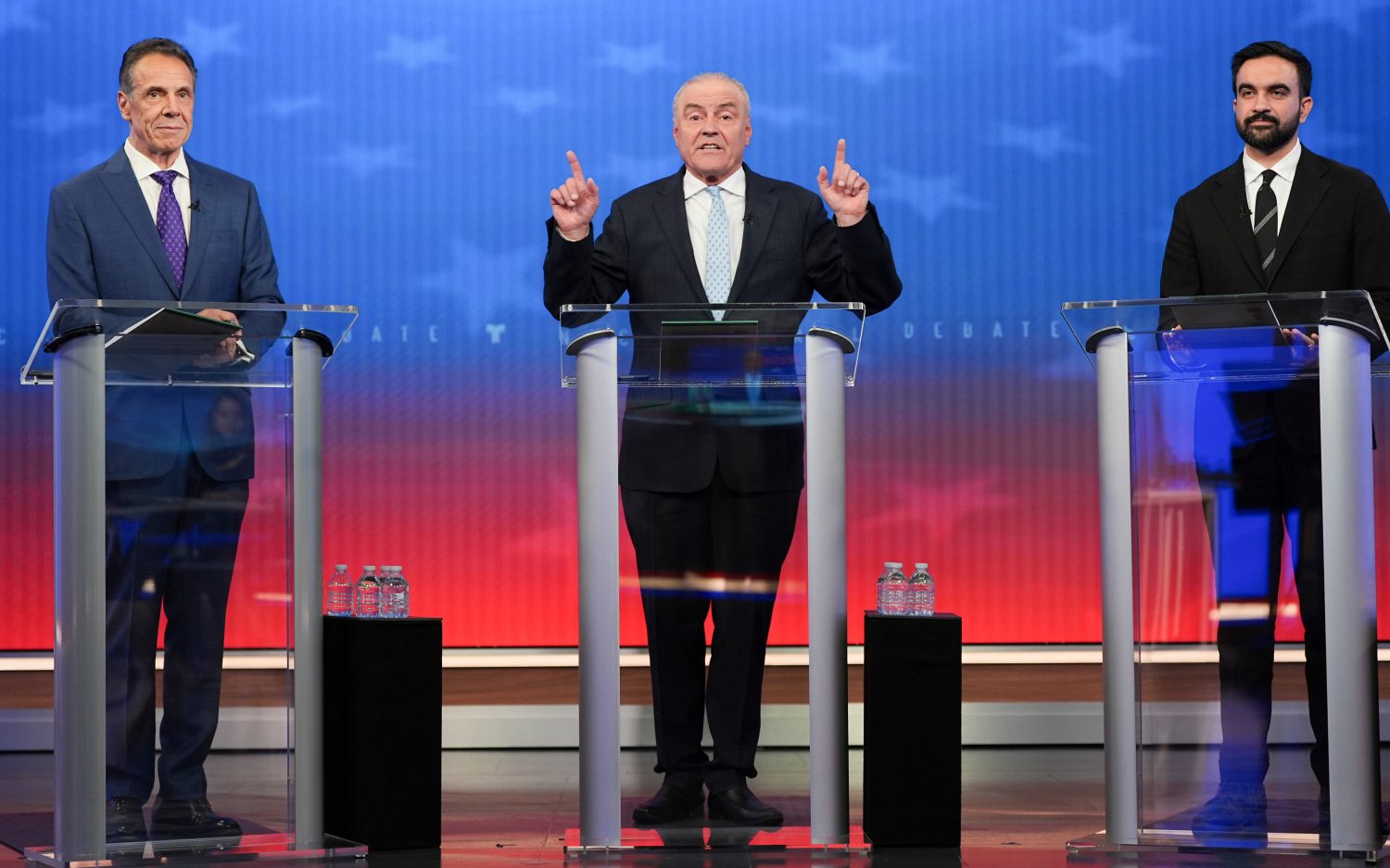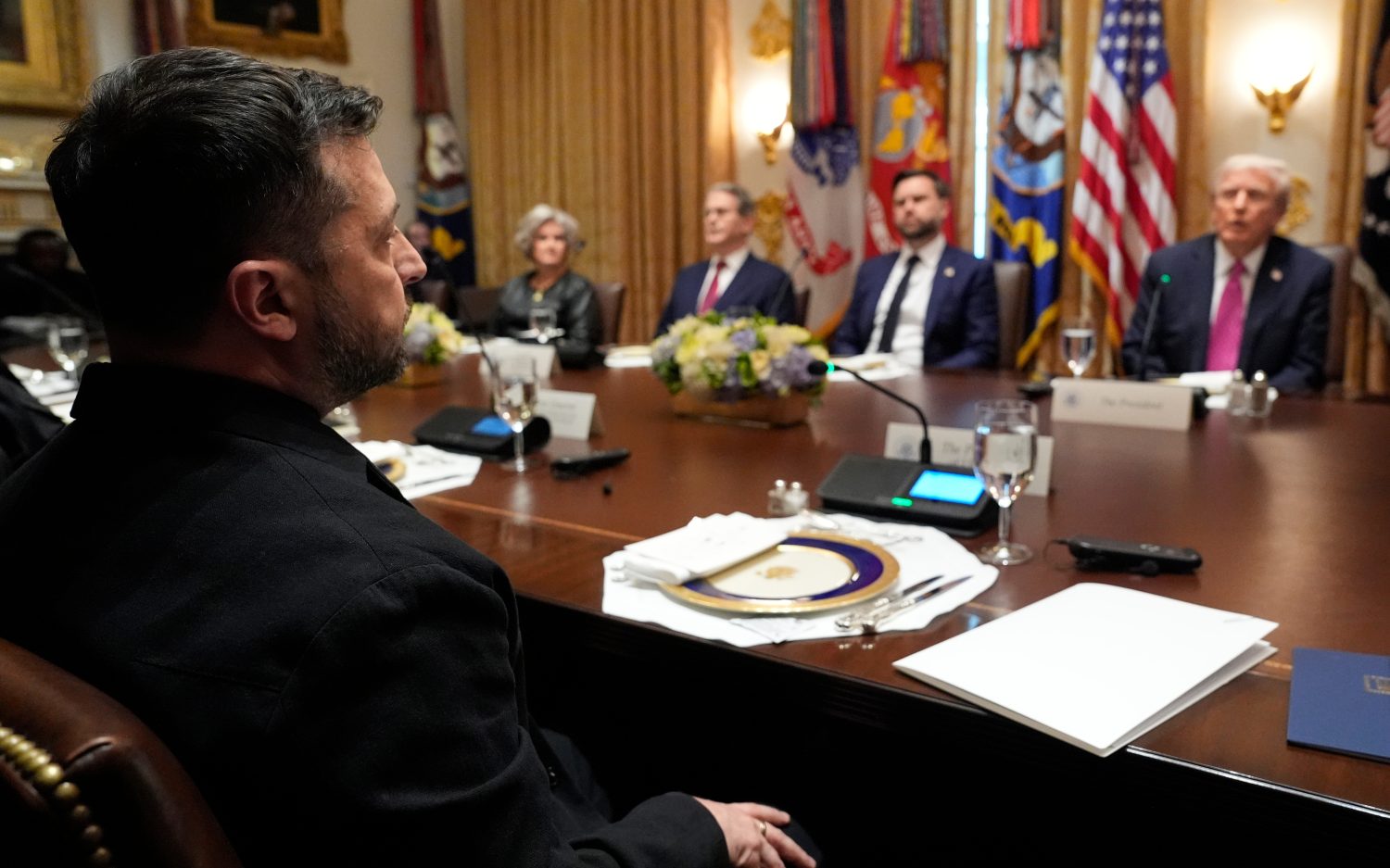A cautionary tale
A look back to a story from 2000 about an abortion business operator who was rushed into the Christian pro-life spotlight and crumbled under pressure
Editor’s note: This article originally appeared in the Sept. 2, 2000, issue of WORLD Magazine and is republished here as part of our Saturday Series.
Nov. 4, 1997, was the day Eric Craig Harrah, an abortion business operator and open homosexual, publicly proclaimed faith in Christ. He walked away from the State College, Pa., abortion mill he operated and, within a week, testified of his conversion in an Assembly of God church. Within two weeks, he was giving his testimony in other churches. Within three months, he was giving interviews to reporters. Within six months, he was on the pro-life speaking circuit, giving talks at fundraising banquets put on by crisis pregnancy centers (CPCs). Soon the media divisions of some major Christian organizations were interviewing Harrah and running his conversion story. Rejoice, print and broadcast stories proclaimed: Harrah believes the Bible is true, and that Jesus Christ has saved him.
Harrah doesn’t believe that now.
During 1998 and 1999 Harrah was the anti-abortion hero, the trophy convert, the hottest new face at pro-life fundraising events. But early this year he abandoned pro-life activism, forced out under a cloud of unstable behavior and suspected theft, lying, and drug abuse (see sidebar). Now, at 32, he has renounced Christianity and returned to homosexuality.
The wreckage of Harrah’s short and dazzling pro-life career evokes questions. Did Christians closest to Harrah push him toward celebrity too quickly, short-circuiting his healing process? Did prominent ministries and Christian media ignore warnings about his credibility and thereby fuel his meteoric rise with their own star power? Had he been sheltered from the Christian “star system,” with its voracious appetite for fresh faces and sensational testimonies, might things be different?
Joan Appleton, who used to work at a Falls Church, Va., abortion business, believes so. Appleton now works with Pro-Life Action Ministries and The Centurions, a group that helps former abortion workers and activists to reorder their lives—a process that can take many years. “Eric Harrah was never put in a position where he had to make changes in his life or take steps toward healing before he began speaking on behalf of the pro-life movement,” she said.
Some Christians foresaw problems. During Harrah’s arc through the pro-life firmament, two factions emerged to warn ministries, media, and even Harrah’s first post-conversion pastor Paul Grabill not to promote him too quickly. The factions had different motives. One group consisted of pro-life activists who felt Harrah’s stories were not credible; they believed he would ultimately damage the movement. The other group believed it unscriptural to trot a new believer so quickly into the spotlight, particularly a spotlight as harsh as that of abortion politics. New Christians, they contended, needed time to grow in their faith.
Former abortion business director Carol Everett was in the second group. “I told Paul Grabill that he needed to disciple Eric, hold his hand, and help him,” said Everett, who added that the Christians who helped in her conversion from abortion to Christ discipled her daily for nearly two years before letting her go public. “I begged him not to let Eric continue speaking. I told him, ‘When someone gets in Eric’s face and asks him how he thinks he can be forgiven after what he’s done, he has to know who God is,’ and that forgiveness comes from God.” Everett said Grabill “patted me on the head over the phone” and told her Harrah would be fine.
Referring to the sensational conversion of the woman whom liberal litigators used as “Roe” in Roe vs. Wade, Everett said, “I believe Paul Grabill wanted Eric to be his Norma McCorvey.”
Did he? “Yes,” Grabill told me. “It was a father-son thing … he was living under my roof.” Grabill now admits he made mistakes. He said his own pride made him believe he could shelter Harrah from criticism, both fair and unfair, that would come with an early spotlight. Grabill believed he could “accelerate Eric’s discipleship process. … I was sure he was the exception to the rule.”
THE DESIRE FOR HERO-CONVERTS, said Pro-Life Action Ministries director Brian Gibson, is one factor that drives the pro-life star system. “We in the pro-life community so desperately want to have things we can point to as victories, that show we’re winning the hearts and minds of the people. We in leadership have taken those who have left the [pro-abortion side] and held them up as our trophies,” Gibson explained. “That hasn’t been the original intention, but it seems to be the net result.”
Cel Levatino agreed. A former abortion business worker who left the industry in 1985 along with her husband, former abortionist Tony Levatino, she grieved when seeing Harrah and McCorvey thrust into the public eye so quickly. “When someone like Norma or Eric renounces abortion, it’s almost impossible for us to restrain ourselves from wanting to use them,” Levatino said. “Exploit is a bit of a strong word, but it’s applicable.”
Levatino stressed that such exploitation is not malicious, but rather a case of good intentions gone awry. Grabill, for example, explained that he encouraged Harrah’s public speaking “as a means of giving God glory for Eric’s dramatic conversion, and as a means of [Eric] having an income for medical, legal bills, etc.”
Initially, Harrah charged speaking fees as low as $250, but as demand for his speeches grew, so did his price tag. CPCs in Youngstown, Ohio, and Ontario, Calif., paid between $750 and $1,000 for 45-minute presentations. When visiting cities, Harrah spoke at local churches in exchange for “love offerings.” Offerings from one 1,500-member church in Rancho Cucamonga, Calif., totaled $3,000.
IN THE STAR SYSTEM, the income factor cuts both ways. Not only can the new convert—sometimes newly unemployed—earn a needed paycheck, but his sensational conversion story and inside scoop about the abortion industry also can jumpstart pro-life fundraising. Gibson’s own group has several times had former abortion employees speak at fundraisers. He said those speakers drew larger attendance and, consequently, raised more money. “When you’re a struggling nonprofit supporting a horribly un-PC issue and suffering open hostility from the legal system, you don’t turn your back easily to the thing that’s going to bring the money in,” Gibson told me, admitting that his own organization has sometimes fallen prey to this trap.
Harrah shattered CPC fundraising records, sometimes motivating pledges that were triple or quadruple those inspired by other speakers. At the Ontario, Calif., CPC, for example, attendees at the fundraising banquet where he spoke pledged $56,000. The most raised by that CPC at prior banquets was $12,000.
Harrah said he was fully aware of his own fundraising value. “I felt exploited and I felt used,” he told me. “I called myself their ‘private dancer,’ you know, like the Tina Turner song: ‘dancer for money, do what you want me to do.’ Nobody gave a darn how I was. Nobody asked how I was doing spiritually … they just wanted me to stand up and talk bad about the abortion industry.”
Philip Ney, founder of The Centurions, has studied the healing cycle faced by abortion workers and activists. He said paying them sends all the wrong messages: “Even Hitler did not tear babies apart with his own hands,” he explained. “Had he stopped slaughtering Jews, would we have paid him to go on the speaking circuit and talk about it? No.” Paying an abortion worker who has recently left the industry, he contended, puts that person on a pedestal and sends an inappropriate message of celebrity.
Sudden celebrity also can create a bizarre disconnect for the former abortion worker, Ney said—and a barrier to true healing. “While working at the abortion clinic, I was referred to by many pro-lifers as a murderer and a baby-killer,” remembered Joan Appleton. “After I left the abortion industry, I became a hero almost overnight. Suddenly I became courageous, warm, and loving in the eyes of many pro-lifers. … They embraced me as their own and told me God had forgiven me but I must speak out now on behalf of human life and everything would be OK.” But it wasn’t OK. Eventually, Appleton was hit square in the face by her role in the killing of human beings. It was part of the healing process her celebrity had allowed her to avoid.
Few data exist about the struggles faced by former abortion workers and activists. But a study of 19 such individuals by Ney showed that one-third struggle psychologically and often still feel guilty, two of five have problems with substance abuse, and 100 percent feel they were moderately or completely dehumanized by the abortion industry. Harrah tried to regain his humanity on the dais. While not denying he at first relished his newfound celebrity, he said he kept up a relentless speaking schedule as a way to make up for those babies whose deaths he had facilitated.
HARRAH’S SPEAKING CAREER began at churches and CPCs, then was further fueled by Christian media. Cornerstone Television, Pentecostal Evangel magazine, and The 700 Club all ran stories about Harrah in 1998 and 1999, as did media divisions of Focus on the Family, Life Dynamics, Coral Ridge Ministries, and Life Issues Institute. The more Harrah appeared in print and on the air, the more demand grew for his speaking. Even when questions were raised about his credibility, some organizations went ahead with their coverage of Harrah.
In July 1998, for example, Life Issues Institute published an interview with Harrah in its newsletter Life Issues Connector. Three months later, even though four pro-life activists had contacted Life Issues Institute with specific evidence of lies Harrah had told during speaking engagements, as well as examples of unstable behavior, Life Issues Connector published a second interview with Harrah, providing him with more positive coverage. The newsletter cited unprecedented reader response to the first Harrah story. Editor Brad Mattes told me the Life Issues Connector interviews were not published as a way to promote Harrah. “We were not saying, ‘This is a credible person, this is a truthful person,’” Mattes said. “We were trying to expose the dirty little secrets of the abortion industry and I think we did that.”
Cornerstone Television and Life Dynamics also ran stories featuring Harrah after being warned he might not be credible. Former abortion worker Joan Appleton said she warned Mark Crutcher of Life Dynamics before he produced a video featuring Harrah, but Crutcher said he did not remember that. But concerning the Harrah claim to have owned 26 abortion centers at age 22, Crutcher said, “We knew that was [expletive].”
As late as last fall, Christian media organizations were still generating positive stories about Harrah. In November 1999, The 700 Club (which apparently did not receive a warning) aired a 14-minute story on Harrah, who by then had long doubted Christianity. He also was using drugs and skipping speaking dates while keeping deposit money, but he still maintained a façade of faith. “I do not subscribe to this theory of gradual withdrawal from sin,” Harrah said near the end of the 700 Club segment. “I took my sins and laid them at the foot of the cross and I left them there.”
Back to despair
In the spring of 1997, Eric Harrah descended on State College, Pa., the leafy, church-filled little college town that is home to Penn State University. His close friend, abortionist Steven Brigham, had sent him to open the town’s first abortion center. Harrah was a veteran center planter; he’d already opened and operated several in the Northeast. But he hated State College, which he saw as insufferably pedestrian compared with the glitzy, gay New York nightlife to which he was accustomed.
After a short, bizarre odyssey in which Harrah boomeranged from deviance to confession and back again, he would hate it even more.
To lay the groundwork for the opening of the new abortion center, Brigham sent Harrah ahead as the human equivalent of napalm. Imposing at nearly 300 pounds, he was the kind of hyper-feminine, in-your-face gay male that homosexual-equality activists would rather hide during election season. He whirled through the town’s sleepy streets wearing makeup and nail polish. He shrieked obscenities in the faces of pro-life protesters. Reining in his flamboyance when expedient, he worked the local press to make his case for “choice.” Though citizens opposed to the new center fought it bitterly, State College Medical Services opened in September 1997.
Harrah hated Christians. “I would do anything in my power to make them miserable,” he would later tell church audiences. But there was one Christian Harrah tried to make miserable and couldn’t. Steve Stupar, a local business owner and an elder in the State College Assembly of God, felt God was leading him to reach out to Harrah. So he staked out the town’s new abortion mill and waited.
For Harrah it wasn’t love at first sight. His first words to Stupar: “Get the [expletive] off my steps! … I’ll have you arrested!” Stupar calmly weathered the ensuing verbal storm, until Harrah finally asked, “Why did you come here?”
“Because you prayed for me to come,” Stupar replied.
Harrah would later tell reporters that the hair stood up on the back of his neck. Only the month before, the story goes, he had prayed. Not specifically for Steve Stupar but that if his involvement in abortion was wrong, God would send someone to show him the right way. Still, Harrah put up a tough front for Stupar that first day: He threatened to have Stupar beaten up if he ever showed his face at the center again.
“Jesus loves you and so do I, Eric,” Stupar reportedly replied. “And I’ll see you tomorrow.”
So began a tenuous friendship between the abortion business operator and the Christian. Stupar says Harrah gradually began to confide in him. The Stupar family opened their hearts and home to Harrah. Ultimately, their kindness would lead Harrah to declare faith in Christ, and Pastor Paul Grabill’s State College Assembly of God would become his new church home.
HARRAH PROCLAIMED HIS FAITH on Nov. 4, 1997. It is unclear whether much discipling of Harrah took place, but within two weeks he was sharing his “testimony” with other churches. It was also just two weeks before his new pastor began acting as Harrah’s booking agent. One national speaker’s bureau rejected Grabill’s new protégé based on that agency’s belief that Harrah’s story was not credible.
“We asked Eric about his conversion, and whether he could provide verification for his stories [about his past],” said Wes Yoder, president of Ambassador Speakers Bureau, the group that represents Cal Thomas, Gary Bauer, and other prominent Christian speakers. “We got no good answers on verification, and I think our questions made him angry.”
In the end, Harrah and Yoder mutually agreed that Ambassador wasn’t the agency to represent him.
But Grabill pressed on, tapping his contacts in ministries and media, and encouraging Harrah to speak publicly. Funny and likable, Harrah quickly became the hottest new face on the pro-life speaking circuit. At churches, crisis pregnancy centers (CPCs), and state right-to-life groups, he held audiences spellbound, even helping some CPCs break fundraising records.
But opposing forces pulled at Harrah. As his reputation as The New Pro-Life Convert grew, some pro-lifers began sounding the alarm that he might not be credible. Susan Rogacs, a veteran activist from State College, was particularly critical of what she saw as lies and hype. For example, Harrah claimed in church talks to have been not just an abortion business operator, but at age 22 the sole owner of 26 abortion centers. He also said he’d been shot at by pro-lifers, but no records existed of shootings at centers he had operated. Harrah admitted to WORLD this summer that he embellished stories while on the speaking circuit.
Rogacs forwarded her criticism to several Christian organizations, but some dismissed it as showing personal pique. Harrah largely gained publicity through Christian media interviews in which he would make statements on camera such as, “It is well with my soul.” But by February 1998, Harrah’s noises about solid faith in Christ were a façade.
“Within two to three months after my conversion … I was over it. I didn’t want to be involved in Christianity or the pro-life movement,” he told me last month. “All the public things I said about how much love I felt and how people had accepted me, that was all lies.”
Harrah said he continued speaking publicly despite his doubt “because I thought if I held on as long as I could, eventually [Christianity] would become real for me.”
Meanwhile, his behavior grew increasingly unstable. During a June 1998 restaurant lunch meeting with a Pottstown, Pa., CPC staff, Harrah exploded in a rage, at one point shouting at a male CPC board member something like: Have you ever slept with a man? … I have and I liked it!
On at least three occasions, he accepted deposits from pro-life groups for speaking engagements and then did not show up, but kept the money. He borrowed a car from a church member but never returned it. Police later recovered the car. Harrah also returned to abusing drugs. Often, he would call Stupar’s State College home in the pre-dawn hours, Stupar said, “crying and high and feeling guilty that he’s speaking to thousands of people about Christ … and then at night he’s out doing drugs.”
Harrah denied calling Stupar, but admitted to WORLD that he abused drugs during this period. He blamed pressure brought by skeptical pro-lifers for his “getting hooked once again on sleeping pills, uppers and downers, and everything else.” Other unstable behavior, he said, was his reaction to a newfound celebrity whose hidden edges were ugly and sharp: “It was horrible, night after night, telling people every single bad thing you’ve ever done, knowing full well they’re totally against what you were. … Many nights, I’d go back to my hotel room and cry.”
Harrah’s reputation as a reliable speaker began to slip. In August 1999, Heartbeat International rescinded its invitation to Harrah to speak at the group’s annual banquet, based on “physical problems and emotional turmoil over … issues people were confronting him on.”
Harrah’s final break with pro-lifers occurred early this year. Late in 1999 he moved to Denton, Texas, to work with the pro-life investigative group Life Dynamics, but that relationship soon ended. In March 2000, Harrah went to Planned Parenthood in New York and swore out an affidavit alleging that Life Dynamics stole records from a Kansas Planned Parenthood facility.
Now Harrah lives with his mother in Delaware and has returned to a flamboyant homosexual lifestyle. He said he still believes abortion is wrong, but told me in July he wished he had not “converted” to Christianity three years ago. He wished, in fact, that he’d never set foot in State College, Pa., or the Assembly of God church where he made his confession of faith. “It will be a cold day in West Jamaica,” he said, “before I ever set foot in a church again.”
An actual newsletter worth subscribing to instead of just a collection of links. —Adam
Sign up to receive The Sift email newsletter each weekday morning for the latest headlines from WORLD’s breaking news team.





Please wait while we load the latest comments...
Comments
Please register, subscribe, or log in to comment on this article.